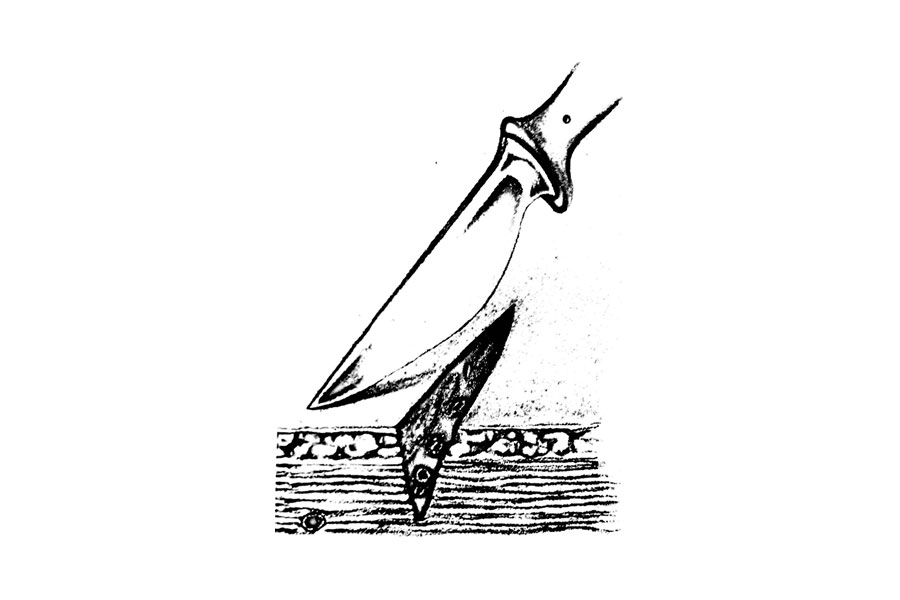Injuries from sharp force trauma, whether it is a knife wound or other sharp object, have specific characteristics that vary based on the motion associated with the wound. Typically, the sharp force wound from a slashing motion is longer than it is deep and does not leave any “bridging” tissue in the wound. Conversely, a wound from a stabbing motion is deeper than it is long. A sharp force object will divide and cut the skin and tissues as it penetrates. There are misconceptions in the medical arena that the terms cut and laceration are the same: this is incorrect.
 A laceration is caused by blunt force trauma and is defined as, “… a wound that is produced by the tearing of soft body tissue. This type of wound is often irregular and jagged.” A laceration can be caused by injuries suffered in traumas such as a motor vehicle crash, being hit by a hammer or a baseball bat. The wound is jagged in appearance with tissue that remains attached from one side of the wound to the other (See image on left).
A laceration is caused by blunt force trauma and is defined as, “… a wound that is produced by the tearing of soft body tissue. This type of wound is often irregular and jagged.” A laceration can be caused by injuries suffered in traumas such as a motor vehicle crash, being hit by a hammer or a baseball bat. The wound is jagged in appearance with tissue that remains attached from one side of the wound to the other (See image on left).
 A cut is caused by a sharp object (See image on right). Typically, the object is forced in a specific direction along the skin and tissues, while also moving downward. What may also be seen is the wound may tail off at one end and may also be of differing depths; meaning one side may be more superficial than the other.
A cut is caused by a sharp object (See image on right). Typically, the object is forced in a specific direction along the skin and tissues, while also moving downward. What may also be seen is the wound may tail off at one end and may also be of differing depths; meaning one side may be more superficial than the other.
This month we are discussing sharp force trauma. The blog topics for this month are:
- Traumatic injury categories (2/5/16)
- Knife wounds: Characteristics (2/12/16)
- Knife wounds: Patterns (2/19/16)
- Knife wounds: Directionality/Blade Width (2/26/16)
Note: To see all posts in this topic, click here











